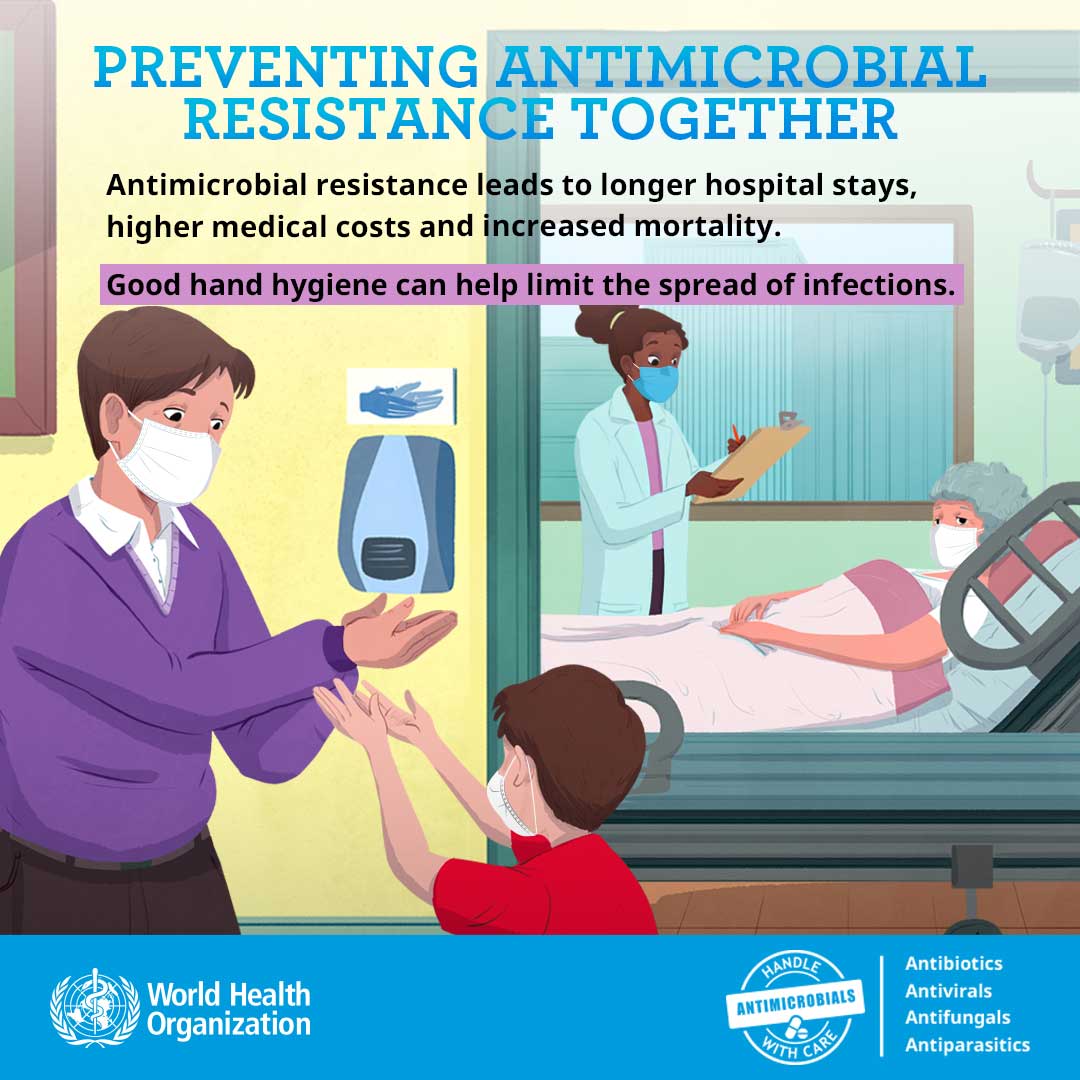Australians are unwittingly being exposed to increased risk of harm from taking antibiotics, used to treat common infections which have no or little benefit, research shows.
Australia ranks among the highest in the developed world for antimicrobial use, according to a state-of-the-nation report on antibiotic use and resistance released by the Australian Commission on Safety and Quality in Health Care (the Commission).
AURA 2023: Fifth Australian report on antimicrobial use and resistance in human health highlights several dangerous bacteria as major healthcare problems because they are increasingly resistant to common antibiotics, making it more difficult to treat serious infections.
The report comes ahead of World AMR (Antimicrobial Resistance) Awareness Week, 18–25 November which is a timely reminder of the risk of overusing antibiotics and the importance of good hygiene habits to prevent infections.
Overall, there has been a drop in Australia’s antimicrobial use in recent years. The AURA 2023 report found that last year, 21.8 million prescriptions for antimicrobials were dispensed in the community, down from 26.6 million in 2017.
One in three Australians (9.8 million people) had at least one antibiotic dispensed which is higher than many similar countries. Australian hospital antimicrobial use is estimated to be nearly three times that of the European country with the lowest use, the Netherlands.
Encouragingly, since 2020 Australia’s antimicrobial use in the community has fallen 18% overall; with a significant 25% decline in 2020 and 2021, but a recent 10% uptick in 2022. Last year, antimicrobial use was highest in Queensland, New South Wales and Victoria.
There are several reasons for the fall in antimicrobial use. These include policy changes in 2020, and physical distancing restrictions to reduce the spread of COVID-19 that led to a decrease in respiratory tract infections.
Sustained changes in the coming years to preserve the value and potency of antibiotics are needed, said Professor John Turnidge AO, Senior Medical Advisor for the Commission.
“In the community and in aged care homes, we can ensure that prescribing for urinary tract infections, skin infections, chronic obstructive pulmonary disease and other respiratory infections is based on guidelines.
“In hospitals, we need to focus on appropriate use of antibiotics for surgical prophylaxis, manage the increase in organisms resistant to last-line antimicrobials such as carbapenemase-producing Enterobacterales (CPE), and monitor for emerging antifungal resistance.
“If we don’t, in the future we may not be able to perform medical procedures such as organ transplants, cancer chemotherapy, diabetes management and major surgery. That is a bleak future that none of us wish to contemplate,” said Professor Turnidge.
While national rates of resistance for many organisms have not changed substantially since 2019, there are several changes in rates and patterns of resistance and sources of infections.
Antimicrobial resistance poses an ongoing health risk, with common pathogens such as Staphylococcus aureus (S. aureus), Escherichia coli (E. coli) and Neisseria gonorrhoeae (N. gonorrhoeae) increasingly resistant to major drug classes, and some organisms resistant to last-resort treatments, such as CPE.
Several specific types of bacteria that are key emerging issues for antimicrobial resistance, include community-acquired methicillin-resistant Staphylococcus aureus (MRSA), E. coli and Clostridioides difficile infection (CDI).

The World AMR Awareness Week (WAAW) is a global campaign to raise awareness and understanding of AMR and promote best practice to reduce the emergence and spread of drug-resistant infections.
WAAW is celebrated from 18-24 November every year. The theme for WAAW 2023 will remain “Preventing antimicrobial resistance together“, as in 2022. AMR is a threat to humans, animals, plants and the environment. It affects us all.









